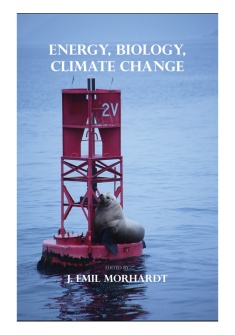CloudRipper Press, with editorial offices in Santa Barbara and Bishop, California, publishes books featuring the latest developments in climate change science, and in renewable energy. It is a spinoff of the now inactive Roberts Environmental Center Press at Claremont McKenna College.
CloudRipper Press is named after a knife-edged peak in the Inconsolable Range of the Sierra Nevada Mountains, west of Bishop, California. At first it appears as insurmountable as the topics covered by the Press.
2016 Books
 Climate Change, Ecology, Health–227 pages, Published in May 2016, $19.95 from Amazon.com
Climate Change, Ecology, Health–227 pages, Published in May 2016, $19.95 from Amazon.com
Similar to its Energy, Biology, and Climate Change in 2015, but based on material only available in the past year.
Energy Innovations, 2016–285 pages, published in May 2016 $19.95 from Amazon.com
Similar to its predecessor in 2015 but based on material only available in the past year.
 Climate Change & The Humanities 2016–255 pages. Published May 2016. $19.95 from Amazon.com
Climate Change & The Humanities 2016–255 pages. Published May 2016. $19.95 from Amazon.com
Similar to its predecessor in 2015 but based on material only available in the past year.
2015 Books
Energy, Biology, Climate Change–365 pages, Published in May, 2015 $19.95 from Amazon.com
The focus of this book, based entirely on scientific technical papers published in 2014 and 2015, is interactions between energy, ecology, and climate change, as well as a few of the responses of humanity to these interactions. The authors of each of the 22 chapters picked a topic of great current scientific interest, wrote an introduction to the topic, and summarized eight of the most important technical journal articles published on it within the last year.Table of contents and more information here.
Energy Innovations–334 pages. Published in May, 2015. $19.95 from Amazon.com.
Because it seems likely that there is money to be made by reducing fossil fuel use, and energy use in general, there is currently an intense amount of entrepreneurial activity surrounding all aspects of our energy supply and usage. This book is an attempt to make some sense of the overwhelming amount of information about this activity streaming down the web (and in the scientific and engineering journals). It is a result of three months in early 2015 of combing through entrepreneurial websites, news items in the press, and a variety of other sources (all well documented in the book) to see what new and exciting developments are occurring in energy. The result is a fascinating look at the types of changes in our energy mix in the near future through over 250 vignettes of innovative energy projects, many in their earliest stages, organized by type of energy activity being considered. Table of Contents and more information here.
 Climate Change & The Humanities–310 pages. Published May, 2015. $19.95 at Amazon.com.
Climate Change & The Humanities–310 pages. Published May, 2015. $19.95 at Amazon.com.
In 2011 Mike Hulme published an opinion piece, Meet the Humanities, in Nature Climate Change, one of the premier scientific journals dealing with climate change. He asserted that “Although climate is inarguably changing society, social practices are also impacting on the climate. Nature and culture are deeply entangled, and researchers must examine how each is shaping the other. But they are largely failing to do so” (Hulme 2011). This was likely the first time that many climate scientists had thought much about the humanities as relevant to what they were studying. This book sets out to rectify that, documenting what a broad selection of academics, journalists, artists, and others working in the humanities and social sciences have been writing about climate change recently. It consists of over 200 summaries of such works and provides a good introduction to the range of thinking about climate change addressed by non-scientists, and a good entry point to a growing literature. Table of Contents here.
Contact and wholesale distribution: info@CloudRipperPress.com, (909) 451-3939



